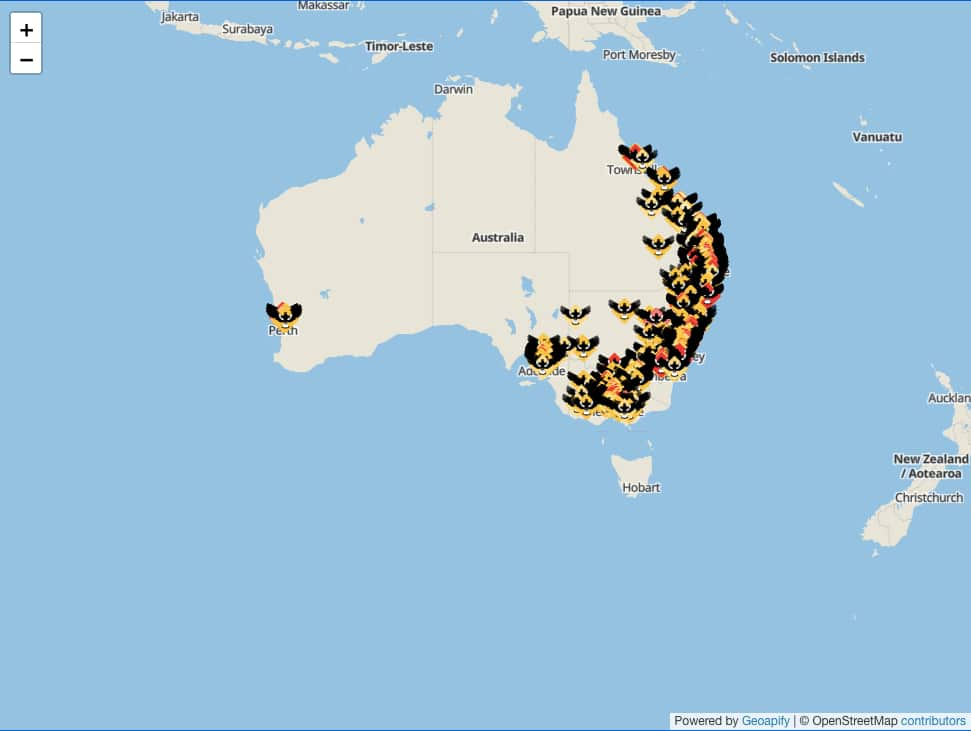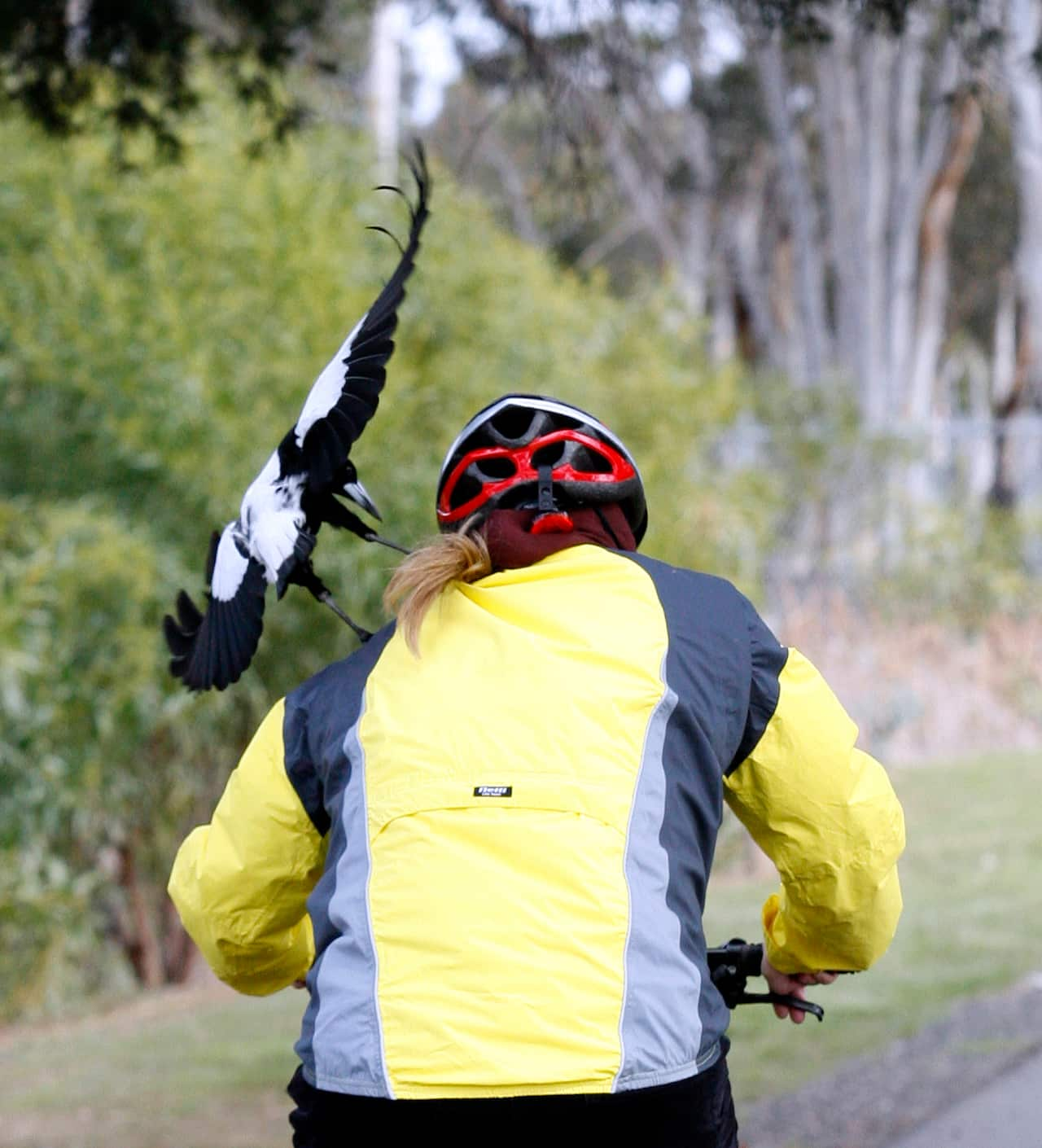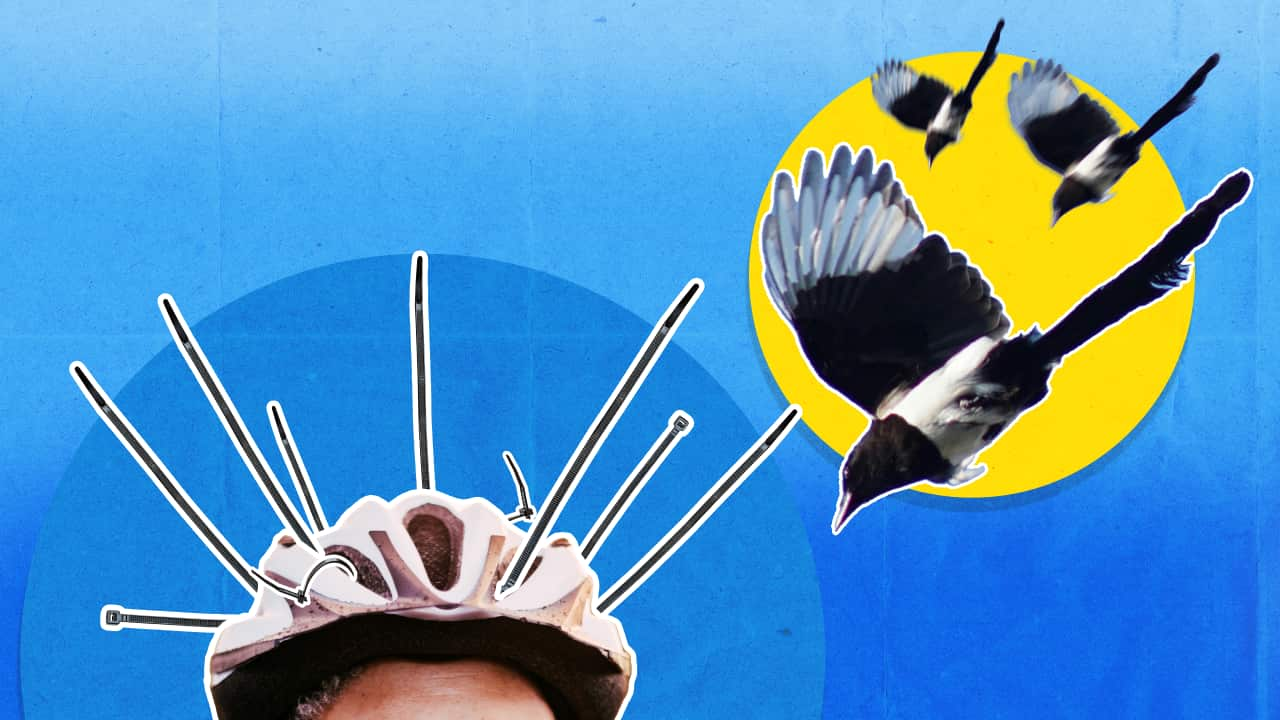Spring is in the air, and for Australians, this means magpie swooping season is upon us, with experts advising people to be aware, stay calm and even try to gain the trust of their wild neighbours.
These iconic black and white birds, native to Australia, are generally charming songbirds, but during breeding season, become fierce defenders of their nests, swooping down on any perceived threat — including unsuspecting passersby.
“Their biology goes a bit nuts. Those of us that have had kids that realise that you do change quite dramatically in your worldview when that life event happens,” Professor Dieter Hochuli, an ecologist at the University of Sydney, told SBS News.
But while birds the world over swoop to protect their offspring, our reaction to the behaviour here is uniquely Australian.
We may be fond of our feathery friends most of the year, but during these weeks, we eye them with suspicion and arm ourselves with frightful headgear to try to scare them off.
For those new to Australia, this behaviour can seem odd, experts say.
“I think Australian fauna are often a little bit perplexing when you first get here,” Hochuli said.
“The magpies are a really distinct part of the Australian bird community. They’re one of our much-loved birds.
“They’re also an animal we associate with urban environments. We share our world with them so much. So in breeding season, you see cyclists with the pointy cable ties tied through their helmets … people putting eyes on the back of their helmets to try and avoid getting swooped.
“I haven’t see these responses elsewhere.”
Humans and magpies live in close quarters in Australia’s suburbs. Source: Getty / Simon McGill
Associate professor Guy Castley, an ecologist from Griffith University, said: “If you’ve just arrived and you see somebody riding around with a bike helmet with a bunch of cable ties coming out the top, they might go: ‘Well, I’m not sure what that is’. Maybe it’s just a fashion statement or something.”
“But as soon as they hear that [they] swoop, they’ll realise that people are just trying to stop the birds from actually making contact.”
Magpie swooping can be funny but also annoying, confronting and highly dangerous. Here’s how to look after magpies and ourselves this spring.
When and where do magpies swoop?
Male magpies typically swoop for about six weeks over September and October, when they have young in the nest or just after the young have flown the nest. This is when the chicks are most vulnerable to predators.
Magpies are territorial and often return to the same nesting spots each year, with local councils and community groups often putting up signs and sharing maps of known swooping areas, which tend to be in urban areas where we co-exist.
One website, Magpie Alert, offers a magpie swooping map and a daily tally of swoops and injuries. This year to date, there have been 2,043 swoops recorded and 264 injuries.
There appears to be a much greater number of magpie swoops long Australia’s east coast than its west. Source: Supplied / Magpie Alert!
To a magpie, the faster you’re moving, the greater the perceived threat, which is why cyclists, joggers and dog-walkers are common targets.
But not all magpies swoop. Estimates suggest only between 10 per cent and 20 per cent of magpies do so.
Nor are magpies the only native bird that swoops; butcher birds and lapwings, or plovers, are also prone to the behaviour.
How dangerous are magpie swoops?
While magpie swooping is extremely common, with injuries ranging from head pecks to eye injuries, it has also sometimes proved fatal.
“There are some absolutely tragic stories of people responding to the shock and falling over and passing away,” Hochuli said.
“Some of the more catastrophic events happen when people haven’t so much been swooped and attacked, but they’ve responded and tripped over and suffered a head injury.”
Castley says swoops can take people by surprise.
“There are people that have been swooped when they’ve been .”
A magpie swooping on a cyclist. Source: AAP / Supplied
How can you protect yourself from swooping magpies?
First up, be mindful of where magpies are. Look out for signs as well as magpie nests, Castley said.
“Before you start walking through an area, have a look in the trees ahead of you to see if there’s any thickness, if there’s any magpies around.
“If you have to walk through a park and there’s a nest nearby, try to stay well clear.”
Second, don’t panic or run.
“That may provoke them even more and you may be actually running towards the nest instead of running away from it,” Castley said.
“So if you do see a magpie swooping, try to locate where the nest is because they’ll defend that territory around the nest.”
Protecting your head and eyes is important — either with a hat and sunglasses or bike helmets with spikes or cable ties.
Large eyes painted on the back of ice cream containers, helmets or hats, however, are likely to be less effective.
“Magpies are pretty smart for a bird and they can actually recognise facial features,” Castley said.
Can you gain the trust of your neighbourhood magpie?
Magpies are generally trusting animals by nature, Hochuli said.
“Most of the year, they’ll often sit very close to us. But they’re wild animals. And it’s just a time of year where trust is lower because the risks of something going wrong are so high.”
Magpies are also highly intelligent and have an ability to recognise individual human faces or types of people that they don’t like based on previous experiences, he added.
“There’s some evidence that shows that they associate faces and body types and have a certain type of person that they really like to swoop.
“We have one on our campus at the moment that’s taken exception to one of our student demographics. It’s remembered an experience that it associates with a potential threat.”
This tendency also means you can get on the good side of your local magpie, Castley said.
“If they recognise you as someone that is not a threat and is never been a threat to them, they may leave you alone.”



